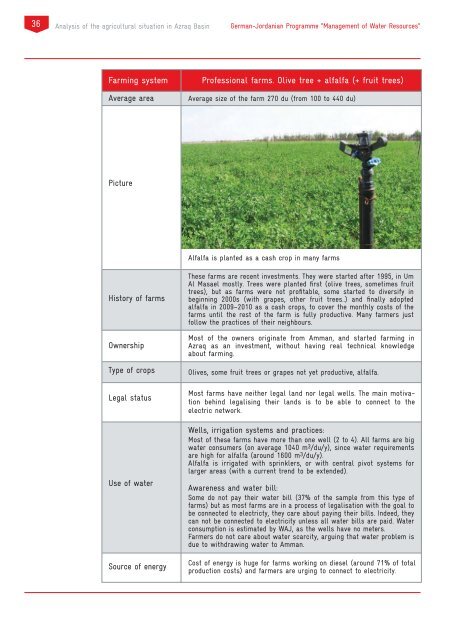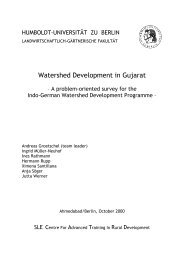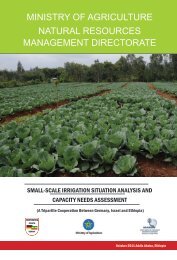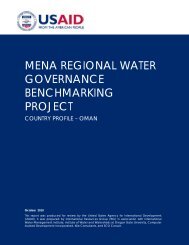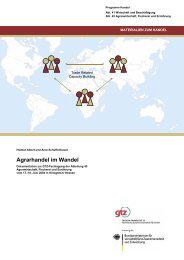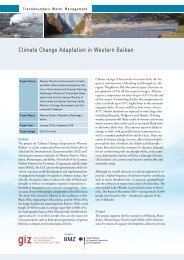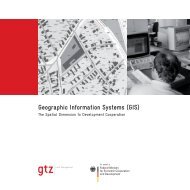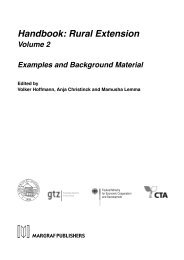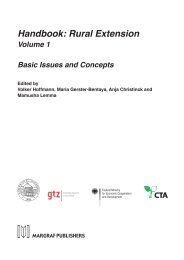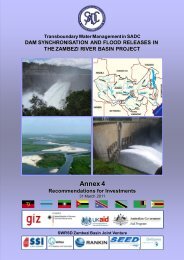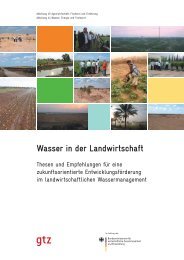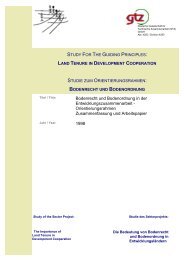Farming in the - WordPress.com
Farming in the - WordPress.com
Farming in the - WordPress.com
You also want an ePaper? Increase the reach of your titles
YUMPU automatically turns print PDFs into web optimized ePapers that Google loves.
36<br />
Analysis of <strong>the</strong> agricultural situation <strong>in</strong> Azraq Bas<strong>in</strong><br />
German-Jordanian Programme “Management of Water Resources”<br />
<strong>Farm<strong>in</strong>g</strong> system<br />
Average area<br />
Professional farms. Olive tree + alfalfa (+ fruit trees)<br />
Average size of <strong>the</strong> farm 270 du (from 100 to 440 du)<br />
Picture<br />
Alfalfa is planted as a cash crop <strong>in</strong> many farms<br />
History of farms<br />
Ownership<br />
Type of crops<br />
Legal status<br />
Use of water<br />
Source of energy<br />
These farms are recent <strong>in</strong>vestments. They were started after 1995, <strong>in</strong> Um<br />
Al Masael mostly. Trees were planted first (olive trees, sometimes fruit<br />
trees), but as farms were not profitable, some started to diversify <strong>in</strong><br />
beg<strong>in</strong>n<strong>in</strong>g 2000s (with grapes, o<strong>the</strong>r fruit trees..) and f<strong>in</strong>ally adopted<br />
alfalfa <strong>in</strong> 2009–2010 as a cash crops, to cover <strong>the</strong> monthly costs of <strong>the</strong><br />
farms until <strong>the</strong> rest of <strong>the</strong> farm is fully productive. Many farmers just<br />
follow <strong>the</strong> practices of <strong>the</strong>ir neighbours.<br />
Most of <strong>the</strong> owners orig<strong>in</strong>ate from Amman, and started farm<strong>in</strong>g <strong>in</strong><br />
Azraq as an <strong>in</strong>vestment, without hav<strong>in</strong>g real technical knowledge<br />
about farm<strong>in</strong>g.<br />
Olives, some fruit trees or grapes not yet productive, alfalfa.<br />
Most farms have nei<strong>the</strong>r legal land nor legal wells. The ma<strong>in</strong> motivation<br />
beh<strong>in</strong>d legalis<strong>in</strong>g <strong>the</strong>ir lands is to be able to connect to <strong>the</strong><br />
electric network.<br />
Wells, irrigation systems and practices:<br />
Most of <strong>the</strong>se farms have more than one well (2 to 4). All farms are big<br />
water consumers (on average 1040 m 3 /du/y), s<strong>in</strong>ce water requirements<br />
are high for alfalfa (around 1600 m 3 /du/y).<br />
Alfalfa is irrigated with spr<strong>in</strong>klers, or with central pivot systems for<br />
larger areas (with a current trend to be extended).<br />
Awareness and water bill:<br />
Some do not pay <strong>the</strong>ir water bill (37% of <strong>the</strong> sample from this type of<br />
farms) but as most farms are <strong>in</strong> a process of legalisation with <strong>the</strong> goal to<br />
be connected to electricty, <strong>the</strong>y care about pay<strong>in</strong>g <strong>the</strong>ir bills. Indeed, <strong>the</strong>y<br />
can not be connected to electricity unless all water bills are paid. Water<br />
consumption is estimated by WAJ, as <strong>the</strong> wells have no meters.<br />
Farmers do not care about water scarcity, argu<strong>in</strong>g that water problem is<br />
due to withdraw<strong>in</strong>g water to Amman.<br />
Cost of energy is huge for farms work<strong>in</strong>g on diesel (around 71% of total<br />
production costs) and farmers are urg<strong>in</strong>g to connect to electricity.


